Infrastructure
Border Roads Organisation (BRO): The Silent Force Behind The Uttarakhand Tunnel Rescue Operations
Tushar Gupta
Nov 28, 2023, 09:37 PM | Updated 05:27 AM IST
Save & read from anywhere!
Bookmark stories for easy access on any device or the Swarajya app.
The NHIDCL (National Highways & Infrastructure Development Corporation Limited) is currently constructing the Silkiyara Tunnel on the Yamunotri National Highway, connecting Silkiyara to Barkot.
This tunnel, spanning 4531 meters, is poised to significantly reduce the road distance by 26 kilometres and cut down travel time by 45 minutes.
Specifically designed as a single tube tunnel, it features two lanes separated by a vertical partition wall. Notably, the tunnel is being built in an area with extremely weak rock mass, comprised of meta-siltstone and phyllites.
The construction of this tunnel is marked by technical intricacies, given its 15-meter diameter. Unfortunately, a collapse occurred between chainage 206 meters at the Silkiyara End, extending to chainage 260 towards the Barkot End on November 12, leaving 41 workers trapped.
Following the unfortunate collapse of a section of the under-construction tunnel, the Border Roads Organization (BRO), renowned for its extensive presence across India and a robust foothold in Uttarakhand, was swiftly mobilized.
In a collaborative effort with both the central and state government agencies, the BRO played a crucial role in the multi-agency rescue operations. The BRO's Project Shivalik was deployed to contribute its expertise to various tasks in support of the rescue efforts.
The Border Roads Organization (BRO) assumed the role of the nodal agency responsible for coordinating the efforts of various entities involved in rescuing the trapped workers.
The operation included the participation of diverse agencies such as the Indian Army, BRO, NDRF, SDRF, NHIDCL, ONGC, RVNL, SJVN, and THDC, among others. Leveraging its significant tunnelling experience, the BRO played a pivotal role by providing valuable insights during the discussions and finalization of various rescue options.
SJVN, formerly known as Satluj Jal Vidyut Nigam, is an Indian public sector undertaking involved in hydroelectric power generation and transmission.
The Border Roads Organization (BRO) swiftly engaged in the planning and execution of a side draft near the incident site.
Additionally, the BRO took on the crucial responsibility of transporting the American Auger Machine to the location. Coordinating its movement from Delhi to Dehradun and then to Silkiyara, the BRO ensured the machine's functionality on-site by November 15, 2023.
Subsequently, the BRO had been actively managing the transportation of various equipment, including drill machines, pipes of different sizes, and ROVs, belonging to multiple agencies.
This coordination involved interactions with the Air Force, Civil Aviation Ministry, and various central and state government agencies.
The primary rescue operation employed the American Auger Machine along the Silkiyara End. This method entailed the insertion of a horizontal 900 mm pipe through the 60-meter collapse zone using the American Auger Machine.
Deployed as the initial response, the machine, moved by the logistics team stationed at Dehradun, commenced operations by November 15, 2023. Progressing 47 meters across the collapse zone, the auger encountered an obstruction on November 24, 2023.
The BRO logistics team, in action, transported a plasma-cutting machine from DRDO, Hyderabad, to the site. The auger was successfully removed by cutting, and the remaining section was manually excavated. Army engineers provided assistance in the ongoing rescue operations.
Four additional options were pursued to enhance the likelihood of a successful rescue operation. The first involved a vertical drill with a diameter of 1.2 meters, planned by SJVN from the top of the hill. The drill hole was designated at chainage 306 meters from the Silkiyara End.
Assigned with the task, BRO efficiently conducted reconnaissance and delivered an 1150-meter approach road to the drilling site in just 48 hours, overcoming various challenges. Furthermore, BRO assisted SJVN in transporting their drilling equipment to the site on November 25, 2023.
In another option, ONGC orchestrated a vertical drill from the Barkot End, with the equipment mobilized for the task. The planned drill hole was intended to reach a depth of 323 meters and feature a finished diameter of 16 inches.
For this initiative, BRO was tasked with providing a track up to the drilling site. Conducting a thorough reconnaissance, BRO surveyed a track spanning approximately 4.5 to 5 kilometres. Out of this, 1050 meters of track were expeditiously completed. Later, work on this option has been halted based on given directives, evolving each minute.
To ensure the safety of the rescue personnel operating within the tunnel, the need for a secure passage in the event of any calamity was imperative. To address this requirement, the BRO supplied 50 box culverts and 50 meters of Hume pipes, which were subsequently utilized to establish the designated safe passage inside the tunnel.
Furthermore, the Border Roads Organization (BRO) was actively engaged in providing operational logistics support to the rescue teams. The coordination efforts were led by a BRO team stationed at HQ DGBR in Delhi and another team at Dehradun Airport.
Their primary responsibility was to liaise with both Central and State government agencies to ensure the smooth and uninterrupted transportation of crucial equipment from various parts of the country to the Tunnel site, facilitating timely rescue operations.
Given the diverse range of agencies involved, the BRO team collaborated with 12 Air Force stations, Airports Authority of India, DRDO, ONGC, NTRO, CISF, Uttarakhand State Disaster Management Authority, and state civil administration and police.
The objective was to establish a "green route" for the transportation of essential supplies. Notably, the logistics team played a pivotal role in prioritizing the movement of critical equipment, including the high-priority American Earth Augur machine with 18 Augurs.
In addition to the Earth Augur, the BRO logistics team successfully coordinated the transportation of other vital equipment such as DRDO's Remotely Operated Vehicle, Trenchless Mini Tunnel Boring Machine, and 12 MS Iron Pipes (800/700mm dia, total length 72 meters) crucial for constructing a horizontal escape tunnel.
The team also managed the transportation of specialized tools like the Plasma cutting machine in collaboration with other stakeholders.
Highlighting the significance of not only equipment but also technical expertise, the BRO logistics operations included the swift movement of critical personnel to the rescue site. This involved a night operation to transport essential personnel, particularly skilled welders, ensuring their prompt arrival at the site for effective and efficient rescue efforts.
The Border Roads Organization (BRO) played a pivotal role in not just managing critical logistics and coordinating the complex rescue operation but also in constructing essential approach tracks at crucial points in the operation. These tracks significantly enhanced the mobility of drilling equipment from various agencies, addressing a vital aspect of the challenging rescue mission.
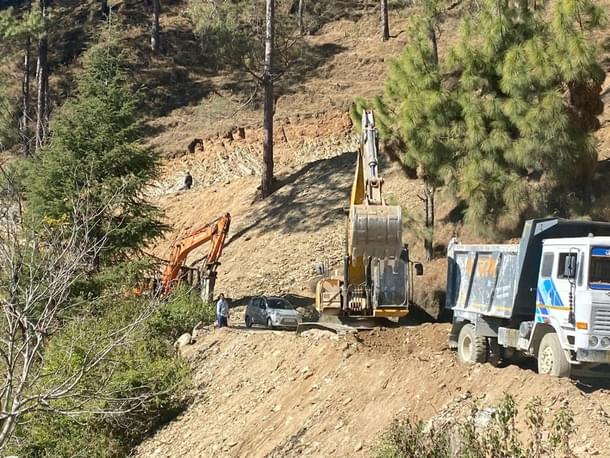
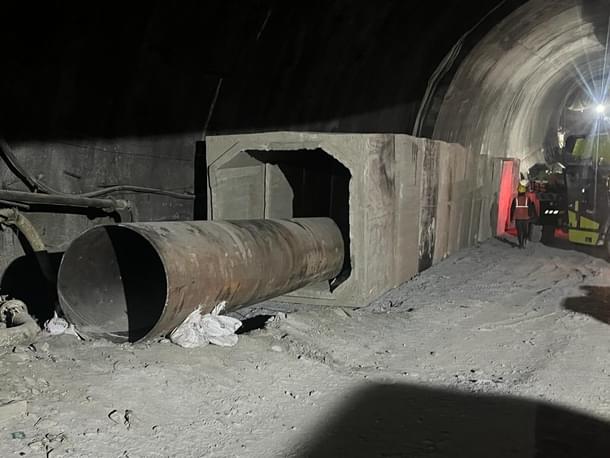
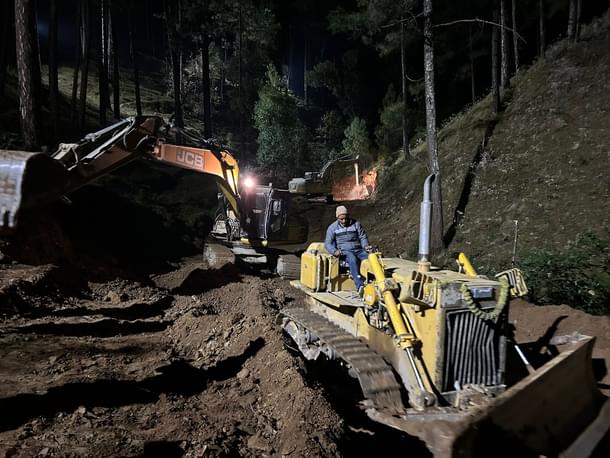
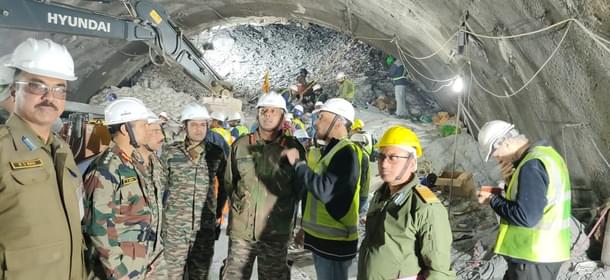
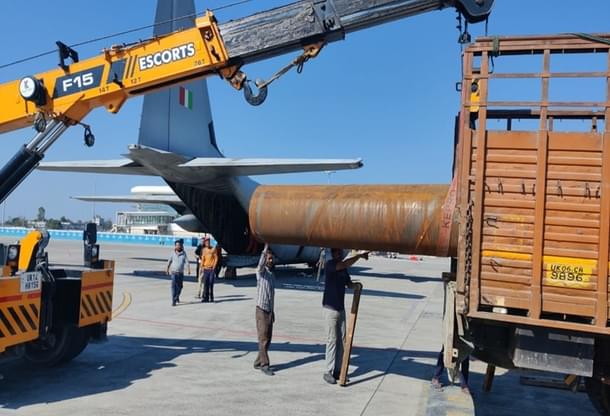
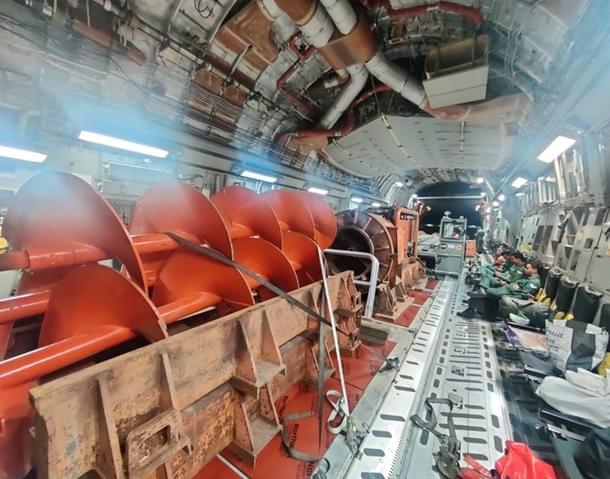
Tushar is a senior-sub-editor at Swarajya. He tweets at @Tushar15_





